This Is How We’d All Die Instantly If The Sun Suddenly Went Supernova

If you’re wondering whether the blast wave or the radiation would kill us first, you’re asking the wrong question.
As far as raw explosive power goes, no other cataclysm in the Universe is both as common and as destructive as a core-collapse supernova. In one brief event lasting only seconds, a runaway reaction causes a star to give off as much energy as our Sun will emit over its entire 10–12 billion year lifetime. While many supernovae have been observed both historically and since the invention of the telescope, humanity has never witnessed one up close.
Recently, the nearby red supergiant star, Betelgeuse, has started exhibiting interesting signs of dimming, leading some to suspect that it might be on the verge of going supernova. While our Sun isn’t massive enough to experience that same fate, it’s a fun and macabre thought experiment to imagine what would happen if it did. Yes, we’d all die in short order, but not from either the blast wave or from radiation. Instead, the neutrinos would get us first. Here’s how.
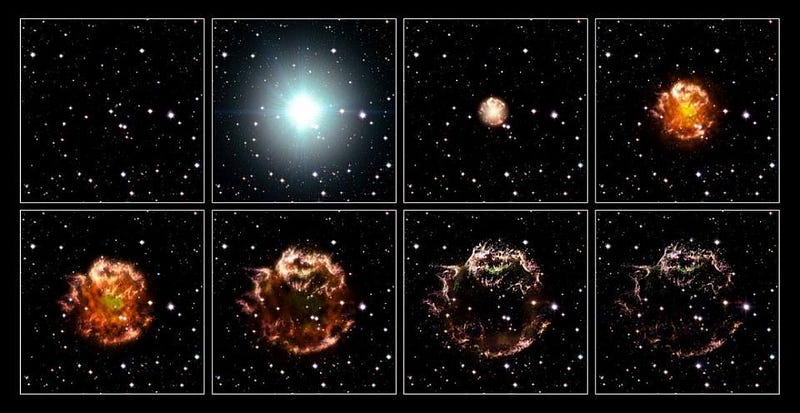
A supernova — specifically, a core-collapse supernova — can only occur when a star many times more massive than our Sun runs out of nuclear fuel to burn in its core. All stars start off doing what our Sun does: fusing the most common element in the Universe, hydrogen, into helium through a series of chain reactions. During this part of a star’s life, it’s the radiation pressure from these nuclear fusion reactions that prevent the star’s interior from collapsing due to the enormous force of gravitation.
So what happens, then, when the star burns through all the hydrogen in its core? The radiation pressure drops and gravity starts to win in this titanic struggle, causing the core to contract. As it contracts, it heats up, and if the temperature can pass a certain critical threshold, the star will start fusing the next-lightest element in line, helium, to produce carbon.
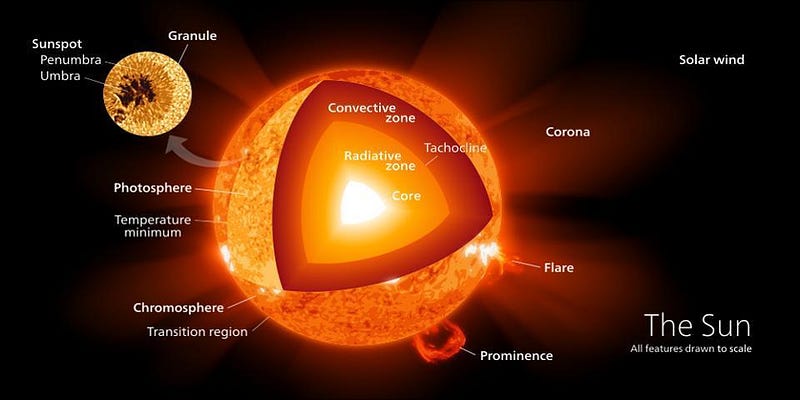
This will occur in our own Sun some 5-to-7 billion years in the future, causing it to swell into a red giant. Our parent star will expand so much that Mercury, Venus, and possibly even Earth will be engulfed, but let’s instead imagine that we come up some clever plan to migrate our planet to a safe orbit, while mitigating the increased luminosity to prevent our planet from getting fried. This helium burning will last for hundreds of millions of years before our Sun runs out of helium and the core contracts and heats up once again.
For our Sun, that’s the end of the line, as we don’t have enough mass to move to the next stage and begin carbon fusion. In a star far more massive than our Sun, however, hydrogen-burning only takes millions of years to complete, and the helium-burning phase lasts merely hundreds of thousands of years. After that, the core’s contraction will enable carbon fusion to proceed, and things will move very quickly after that.
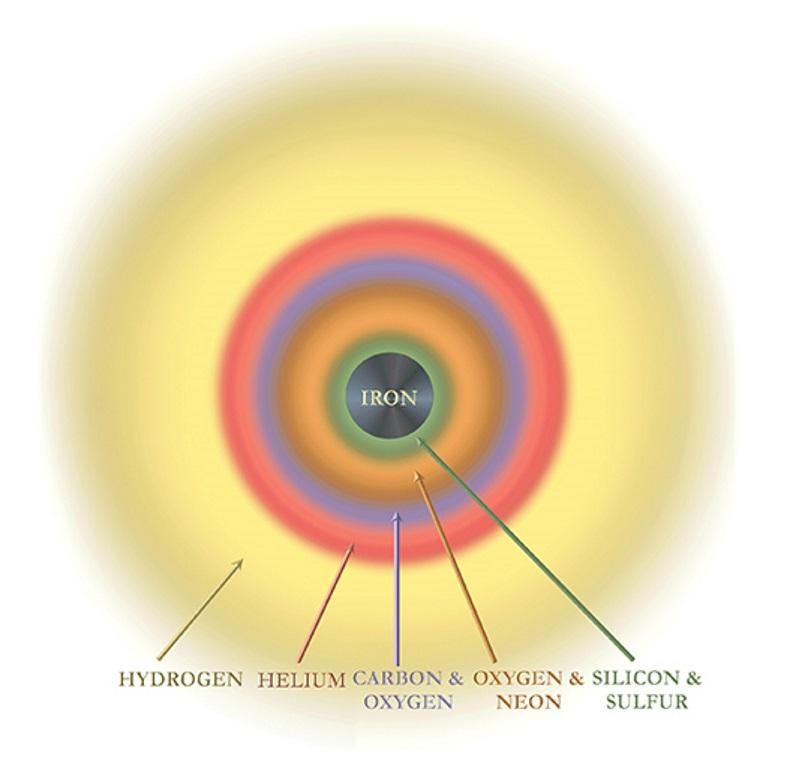
Carbon fusion can produce elements such as oxygen, neon, and magnesium, but only takes hundreds of years to complete. When carbon becomes scarce in the core, it again contracts and heats up, leading to neon fusion (which lasts about a year), followed by oxygen fusion (lasting for a few months), and then silicon fusion (which lasts less than a day). In that final phase of silicon-burning, core temperatures can reach ~3 billion K, some 200 times the hottest temperatures currently found at the center of the Sun.
And then the critical moment occurs: the core runs out of silicon. Again, the pressure drops, but this time there’s nowhere to go. The elements that are produced from silicon fusion — elements like cobalt, nickel and iron — are more stable than the heavier elements that they’d conceivably fuse into. Instead, nothing there is capable of resisting gravitational collapse, and the core implodes.

This is where the core-collapse supernova happens. A runaway fusion reaction occurs, producing what’s basically one giant atomic nucleus made of neutrons in the star’s core, while the outer layers have a tremendous amount of energy injected into them. The fusion reaction itself lasts for only around 10 seconds, liberating about 10⁴⁴ Joules of energy, or the mass-equivalent (via Einstein’s E = mc²) of about 10²⁷ kg: as much as you’d release by transforming two Saturns into pure energy.
That energy goes into a mix of radiation (photons), the kinetic energy of the material in the now-exploding stellar material, and neutrinos. All three of these are more than capable of ending any life that’s managed to survive on an orbiting planet up to that point, but the big question of how we’d all die if the Sun went supernova depends on the answer to one question: who gets there first?
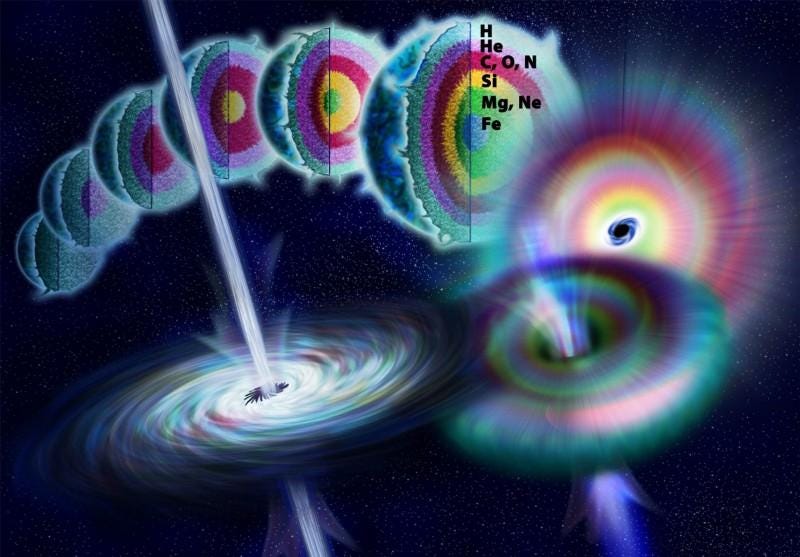
When the runaway fusion reaction occurs, the only delay in the light getting out comes from the fact that it’s produced in the core of this star, and the core is surrounded by the star’s outer layers. It takes a finite amount of time for that signal to propagate to the outermost surface of the star — the photosphere — where it’s then free to travel in a straight line at the speed of light.
As soon as it gets out, the radiation will scorch everything in its path, blowing the atmosphere (and any remaining ocean) clean off of the star-facing side of an Earth-like planet immediately, while the night side would last for seconds-to-minutes longer. The blast wave of the matter would follow soon afterwards, engulfing the remnants of our scorched world and quite possibly, dependent on the specifics of the explosion, destroying the planet entirely.
But any living creature would surely die even before the light or the blast wave from the supernova arrived; they’d never see their demise coming. Instead, the neutrinos — which interact with matter so rarely that an entire star, to them, functions like a pane of glass does to visible light — simply speed away omnidirectionally, from the moment of their creation, at speeds indistinguishable from the speed of light.
Moreover, neutrinos carry an enormous fraction of a supernova’s energy away: approximately 99% of it. In any given moment, with our paltry Sun emitting just ~4 × 10²⁶ joules of energy each second, approximately 70 trillion (7 × 10¹³) neutrinos pass through your hand. The probability that they’ll interact is tiny, but occasionally it will happen, depositing the energy it carries into your body when it happens. Only a few neutrinos actually do this over the course of a typical day with our current Sun, but if it went supernova, the story would change dramatically.
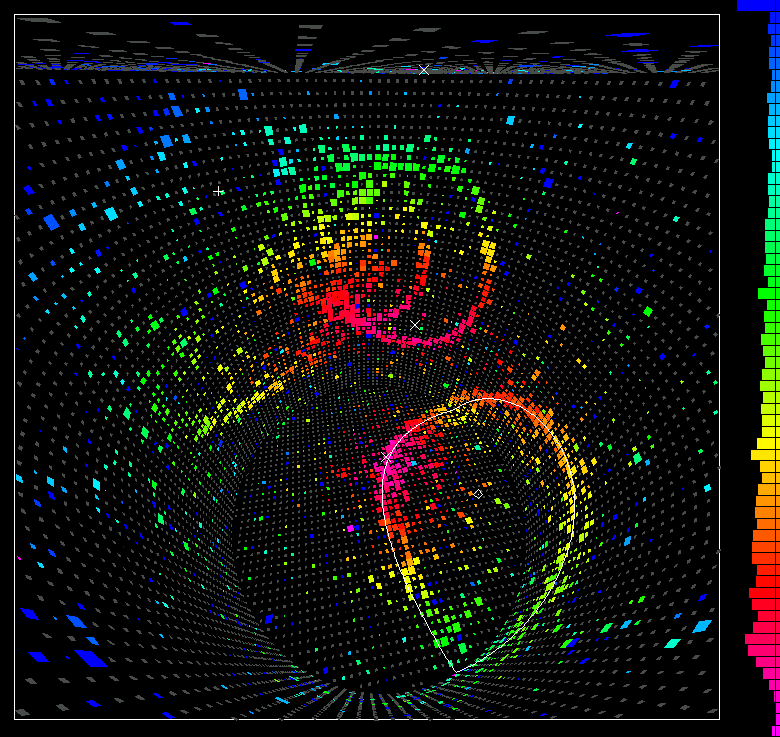
When a supernova occurs, the neutrino flux increases by approximately a factor of 10 quadrillion (10¹⁶), while the energy-per-neutrino goes up by around a factor of 10, increasing the probability of a neutrino interacting with your body tremendously. When you work through the math, you’ll find that even with their extraordinary low probability of interaction, any living creature — from a single-celled organism to a complex human being — would be boiled from the inside out from neutrino interactions alone.
This is the scariest outcome imaginable, because you’d never see it coming. In 1987, we observed a supernova from 168,000 light-years away with both light and neutrinos. The neutrinos arrived at three different detectors across the world, spanning about 10 seconds from the earliest to the latest. The light from the supernova, however, didn’t begin arriving until hours later. By the time the first visual signatures arrived, everything on Earth would have already been vaporized for hours.

Perhaps the scariest part of neutrinos is how there’s no good way to shield yourself from them. Even if you tried to block their path to you with lead, or a planet, or even a neutron star, more than 50% of the neutrinos would still get through. According to some estimates, not only would all life on an Earth-like planet be destroyed by neutrinos, but any life anywhere in a comparable solar system would meet that same fate, even out at the distance of Pluto, before the first light from the supernova ever arrived.
The only early detection system we’d ever be able to install to know something was coming is a sufficiently sensitive neutrino detector, which could detect the unique, surefire signatures of neutrinos generated from each of carbon, neon, oxygen, and silicon burning. We would know when each of these transitions happened, giving life a few hours to say their final goodbyes during the silicon-burning phase before the supernova occurred.
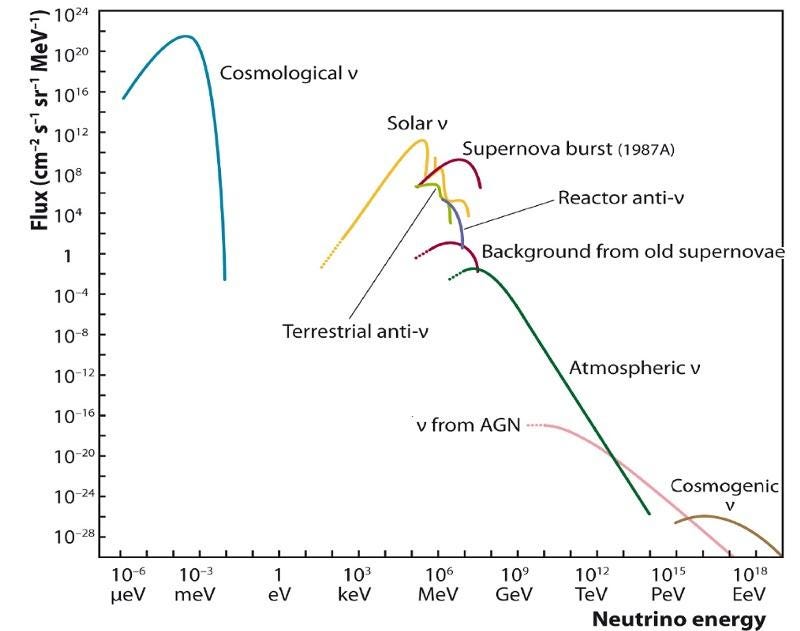
It’s horrifying to think that an event as fascinating and destructive as a supernova, despite all the spectacular effects it produces, would kill anything nearby before a single perceptible signal arrived, but that’s absolutely the case with neutrinos. Produced in the core of a supernova and carrying away 99% of its energy, all life on an Earth-like would receive a lethal dose of neutrinos within 1/20th of a second as every other location on the planet. No amount of shielding, even from being on the opposite side of the planet from the supernova, would help at all.
Whenever any star goes supernova, neutrinos are the first signal that can be detected from them, but by the time they arrive, it’s already too late. Even with how rarely they interact, they’d sterilize their entire solar system before the light or matter from the blast ever arrived. At the moment of a supernova’s ignition, the fate of death is sealed by the stealthiest killer of all: the elusive neutrino.
Ethan Siegel is the author of Beyond the Galaxy and Treknology. You can pre-order his third book, currently in development: the Encyclopaedia Cosmologica.





